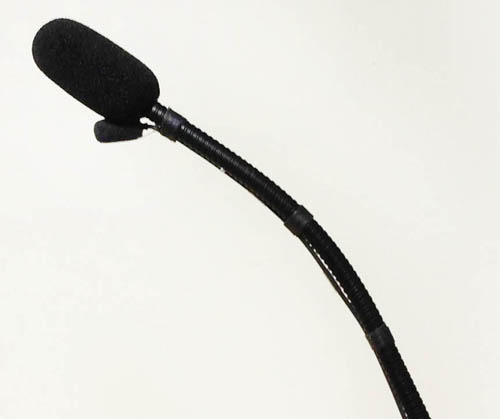A lot of my work is with conferences and corporate meetings. The approach is slightly different in comparison to traditional music gigs, particularly when it comes to microphones.
Wireless lavalier and headworn/earset microphones are common in “corporates,” visually discreet while allowing presenters to move about the stage and use their hands to demonstrate products or operate controls of computers and AV equipment.
When the feed is going to a PA system, lavalier mics with a directional pattern should be used to reduce the chance of feedback, but if the feed is just for a recording, an omnidirectional lav can be a good choice. A downside of lavs is clothing noise if fabric rubs across the mic.
Earset and headworn designs put the mic on the heads of presenters, with the element closer to their mouths. Earset units mount from a single ear while headworn units usually wrap around both ears. The key to both is a secure yet comfortable fit so the mic doesn’t slip or move around.
Some models have a shorter boom that locates the mic element at the user’s cheek while others have a longer boom that puts the element right at the mouth. The closer the mic is to the source, the better in terms of gain before feedback.
Handheld wireless mics are another common choice for presentations. The key is to discuss proper mic techniques with all presenters or you’re likely to be fighting a losing battle in the feedback war. Not every event has the need or budget for wireless, and most meetings we work have a mixture of both wireless and wired models.
The most common type is the podium (lectern) mic. (Technically what most of us refer to as a podium is actually a lectern, so for the purposes of this article, we’ll use “podium” when referring to the mic type and “lectern” for the actual structure.) There’s a lot of variety when it comes to these mics, each with pros and cons.
Handheld mic on a stand. A typical wireless or wired handheld vocal mic that’s supported by a floor stand and boom next to the lectern or supported by a table stand placed on the lectern. While this can produce good results, a typical handheld mic is rather large and can block the face of presenters, particularly not welcome if they’re on camera. It’s also hard for many presenters to adjust properly.
Handheld mic on a gooseneck stand. While a gooseneck stand is easier to adjust, it’s still a clunky looking package, and goosenecks can lose their strength over time from repeated flexing so a heavy mic might make an older gooseneck sag during use. Another problem can occur if the gooseneck is mounted to a flange on the lectern surface, because surface noise can be transmitted up the gooseneck into the mic. An isolation mic clip can be used to reduce this noise.
















